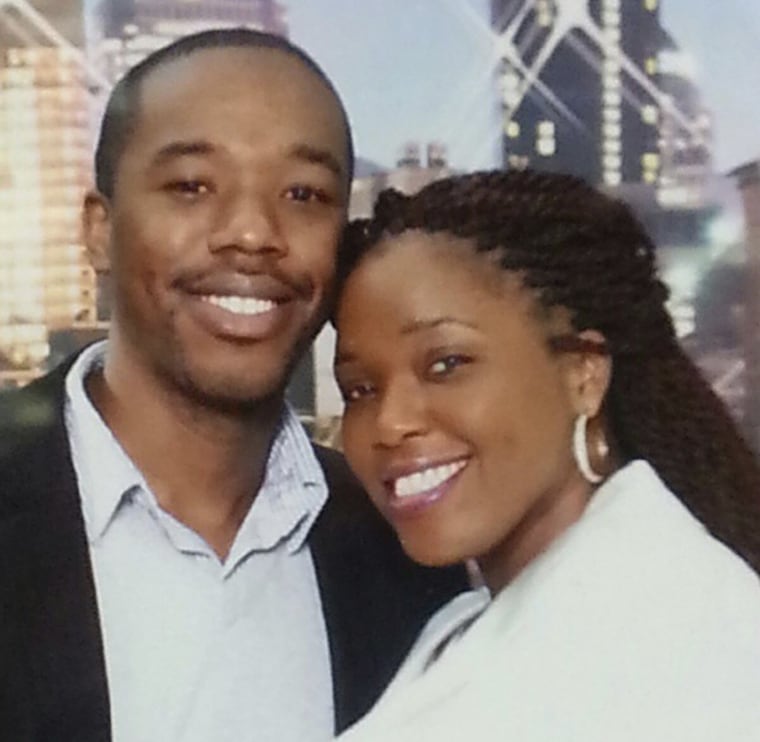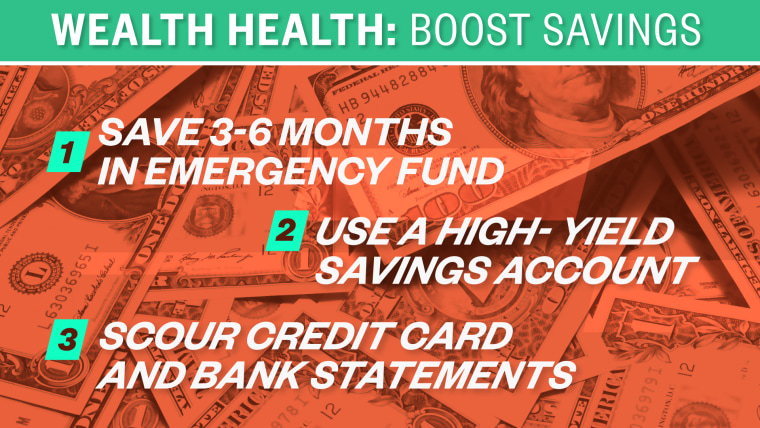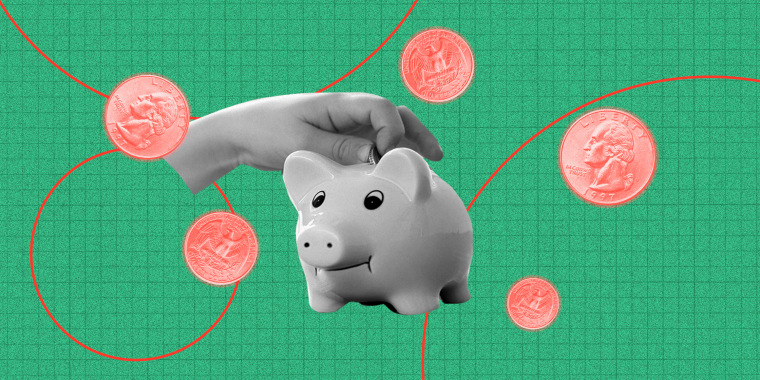Like many Americans, Vanessa Moore, a paralegal living in Newark, New Jersey, became increasingly worried about her finances throughout 2020. She has watched the COVID-19 pandemic leave millions without jobs. A contract worker, Moore fears that when her current contract ends later this year, she won’t have enough emergency savings to sustain her family's lifestyle if she is unable to quickly find another job. Along with her husband, who is also a contract worker, Moore wants to build up enough savings that will support her three kids. But with the high cost of rent, food and credit card payments, finding additional savings hasn't been easy.
“I don't want us to struggle in any type of a way,” Moore told TODAY. “That's my goal.”
Earlier this month, Moore sat down with NBC News senior business correspondent and MSNBC anchor Stephanie Ruhle to discuss better ways to save. Ruhle told Moore to first calculate how much she needs to put away in an emergency fund, and then gave her additional guidance on how to grow multiple savings accounts.

Vanessa's monthly income and expenses
Currently, Moore and her husband, a loss prevention executive, make a combined $127,000. In addition to their $2,300 monthly rent payment, they spend at least $4,400 a month in groceries, utilities, credit cards, cell phone bills, car payments and other expenses.
While the pandemic has caused Moore a lot of stress over her future job prospects, it has also helped her financially in some ways. Before the pandemic, Moore had a long commute to the office by car and train. But after nine months of working from home and not having to commute, she’s been able to stash away an additional $800 a month. Additionally, she received a discount from her car insurance company because she’s driving less.
3-step emergency fund savings plan
Moore committed to following just a few easy steps to get her savings back on track.
1. Transfer savings into a high-yield account
Following Ruhle’s advice, Moore transferred her savings into a high-yield account, which earns a higher interest on her savings. Switching to a high yield account will allow her to save additional money without doing anything. The only barrier is that many high-yield savings account require a minimum deposit, but if you won't be touching the money for awhile, Ruhle says it's definitely worth it.
2. Axe unnecessary expenses
Moore was already tracking her spending using the Fetch Rewards App, a shopping app that grants free gift cards to users when they upload receipts. To get a better understanding of how much she was spending on subscriptions, Moore downloaded Truebill, a money management app. The app allowed her to see that she was paying for a number of subscriptions she wasn’t using, which she immediately canceled.
3. Calculate your emergency fund
After taking a closer look at her savings, Moore realized she already had enough money in her account to last three months without a job. She’s now working towards saving enough that will last her family at least six months.
1 month later: Emergency savings success
As she continued to monitor her monthly spending, Moore was shocked to see how much money she was wasting on subscription services. There were a number of free-trial subscriptions she had signed up for but then forgot about, she explained, and had no idea she was paying them. “I was able to eliminate $244 for the month,” she said.
Since Moore already had a savings account set up with direct deposits from her paycheck, she said the process of switching to a high-yield account was easy: All she had to do was call her bank. By transitioning to a high-yield savings account, Moore is increasing her savings while doing less. And by taking the time to analyze her spending and cut back on unnecessary expenses, she is now contributing even more money to her emergency savings.

Watching her savings grow, Moore said she’s no longer “as anxious as I was before,” even with the current uncertainly in the job market. She estimates being able to reach her nine-month emergency savings goal sometime by the end of spring.
“Knowing where to put it, and how to put it, was really valuable for me,” she said of her money.
Now, Moore is also excited to educate her kids about the benefits of saving. “I want them to have a mindset of letting their money work for them, and not to have to work so hard for money, and to save at the end of the day,” she said.

